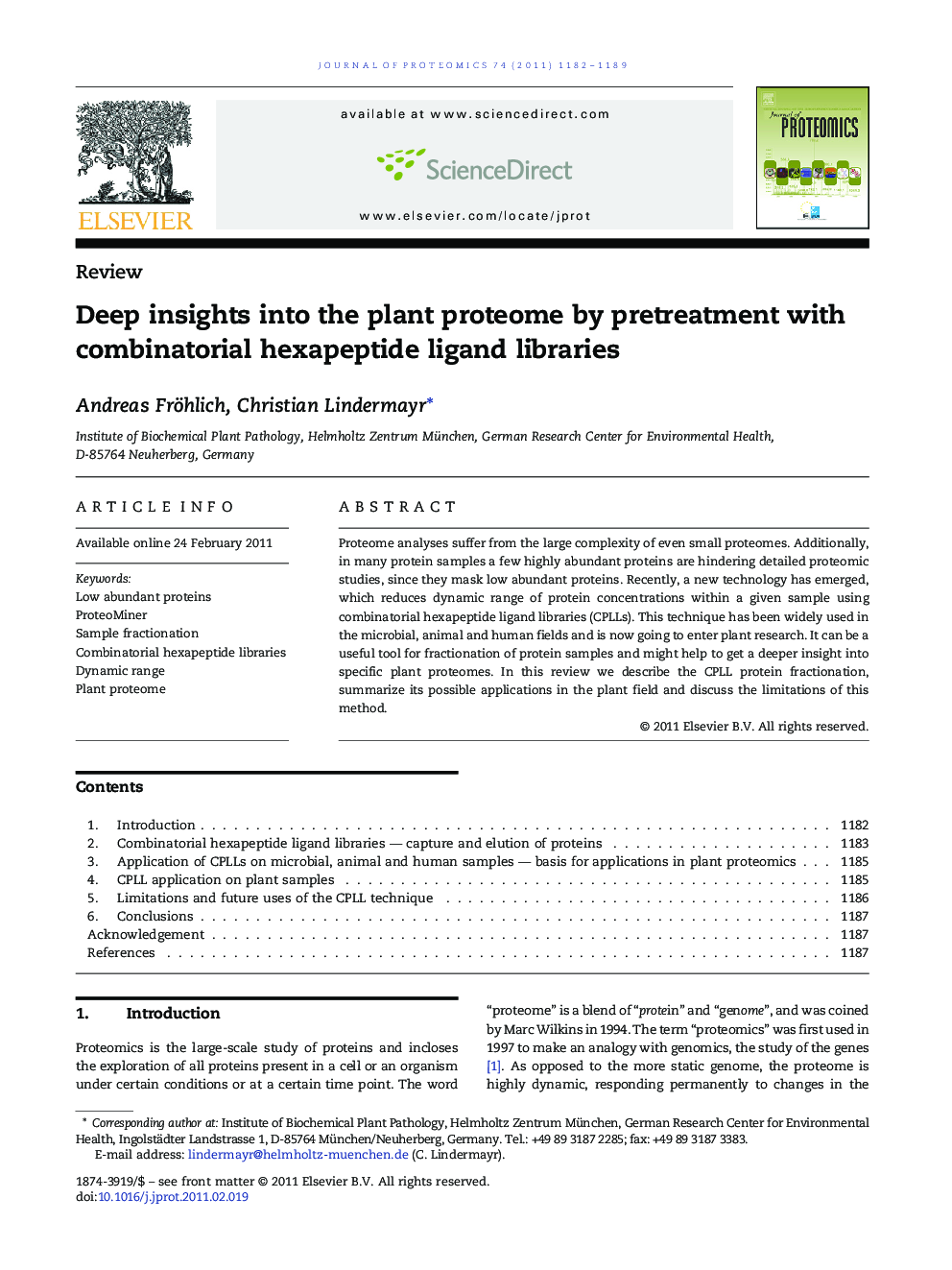| کد مقاله | کد نشریه | سال انتشار | مقاله انگلیسی | نسخه تمام متن |
|---|---|---|---|---|
| 1225790 | 968253 | 2011 | 8 صفحه PDF | دانلود رایگان |

Proteome analyses suffer from the large complexity of even small proteomes. Additionally, in many protein samples a few highly abundant proteins are hindering detailed proteomic studies, since they mask low abundant proteins. Recently, a new technology has emerged, which reduces dynamic range of protein concentrations within a given sample using combinatorial hexapeptide ligand libraries (CPLLs). This technique has been widely used in the microbial, animal and human fields and is now going to enter plant research. It can be a useful tool for fractionation of protein samples and might help to get a deeper insight into specific plant proteomes. In this review we describe the CPLL protein fractionation, summarize its possible applications in the plant field and discuss the limitations of this method.
In most protein samples highly abundant proteins are hindering proteomic studies by masking low abundant proteins. Recently, a new technology has emerged, which reduces dynamic range of protein concentrations within a given sample using combinatorial hexapeptide ligand libraries (CPLLs). Here we describe the CPLL protein fractionation, summarize its possible applications in the plant field and discuss its limitations.Figure optionsDownload high-quality image (107 K)Download as PowerPoint slide
Journal: Journal of Proteomics - Volume 74, Issue 8, 12 August 2011, Pages 1182–1189